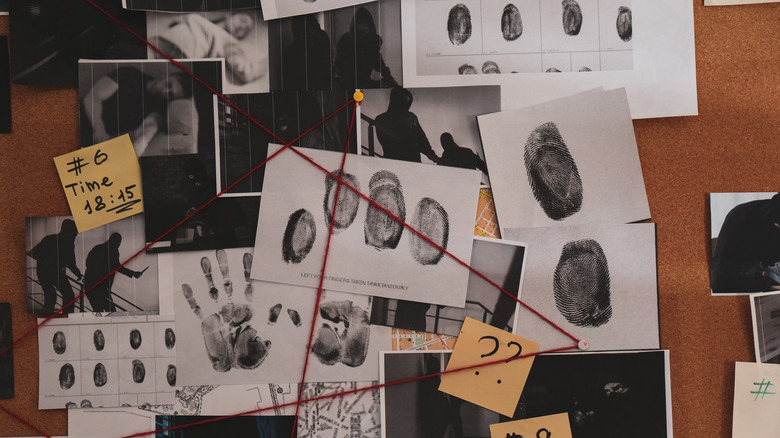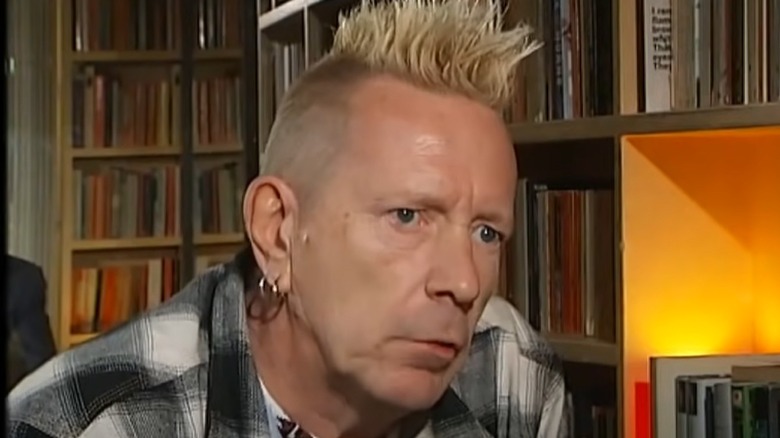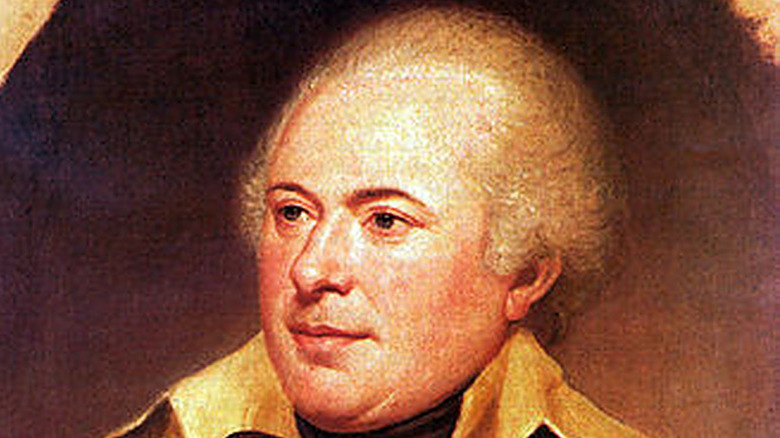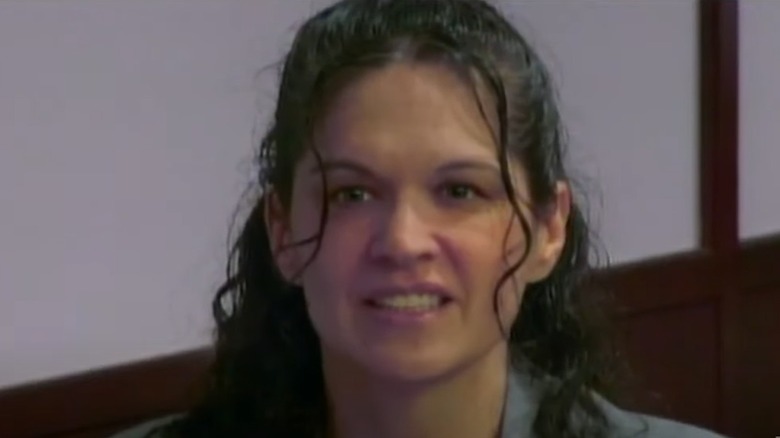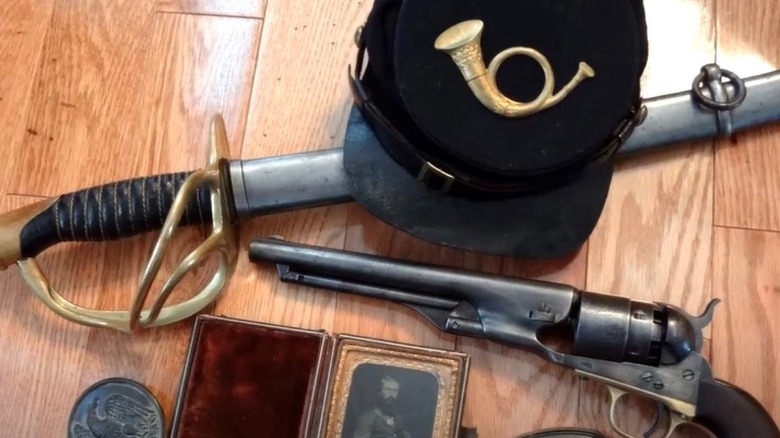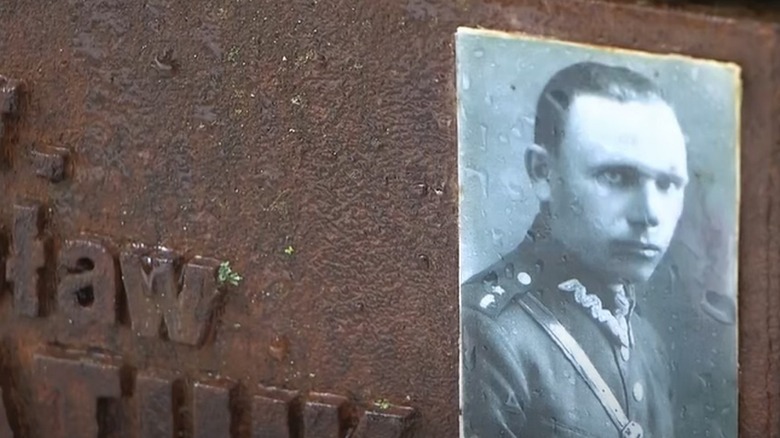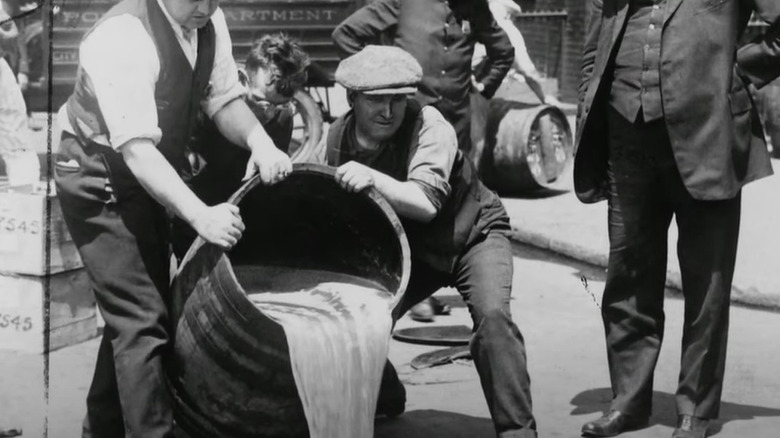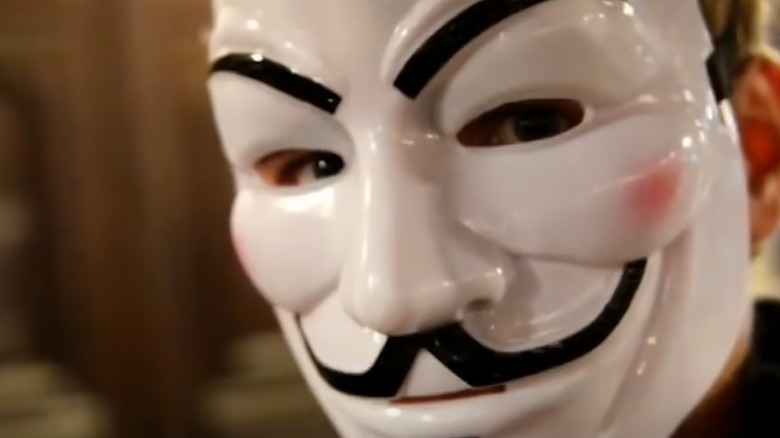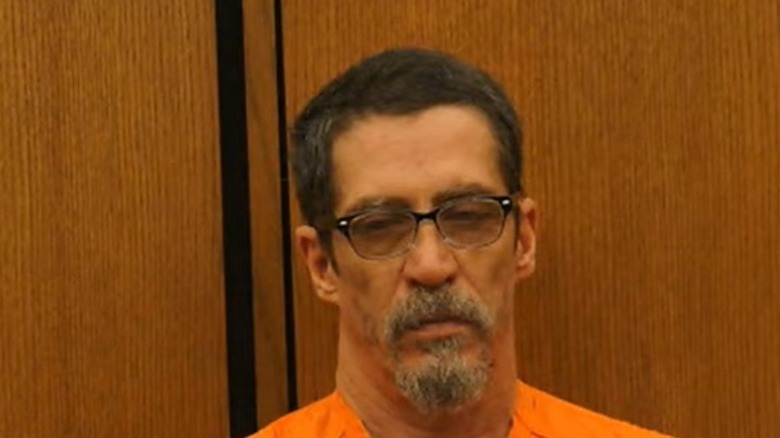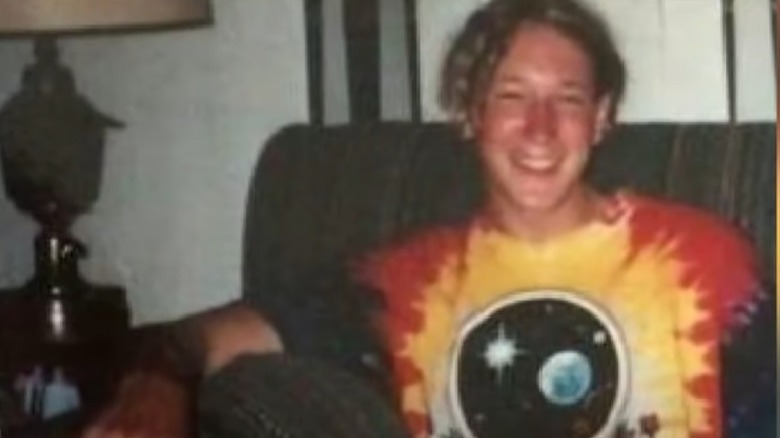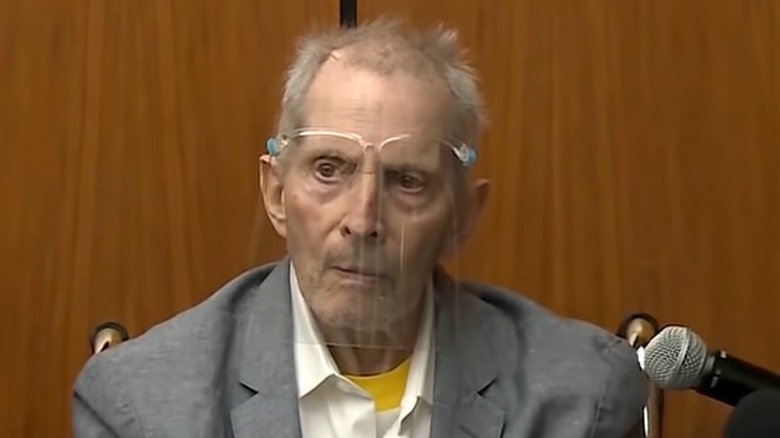True Crime Theories That Wound Up Being True
According to Health, one of the reasons the true crime genre is booming, aside from indulging in the shock factor, is because people want to play armchair detectives and theorize about the truth. In the past, people reading fiction could envision themselves as a detective and try to solve a mystery. One of the first armchair detectives was Edgar Allan Poe's very own C. Auguste Dupin. In "The Murders in the Rue Morgue," two people are murdered, and the case baffles the police. According to Crime Reads, the fictional Dupin solves the case largely by solving puzzles and looking at the paper. As noted by Smithsonian Magazine, Poe himself tried to solve the real murder of Mary Rogers through his book, "The Mystery of Marie Rogêt," where Dupin makes his second appearance and solves the case.
Some people may scoff at or scold so-called "citizen sleuths," but like Dupin, the average Joe can sometimes be crucial in solving a case. According to Netflix, "Don't F*** With Cats" focused on amateurs on the internet that hunted down a criminal. Even earlier, in the '90s, the website tentgirl.com relied on the public to help solve the case of a girl missing since the '60s, Vice reported. In the PBS show "History Detectives," the detectives' process is explained as such: "the experts first come up with a theory they need to prove or disprove before jumping to any conclusions" (via PBS). True crime cases (especially mysterious ones like the disappearance of Brian Shaffer) generate endless public theories. Sometimes, these true crime theories end up being just that — true.
Sex Pistols' Johnny Rotten tried to warn the world
Though some might frown on citizen investigations, in the United Kingdom some police and even former Prime Minister Theresa May have toyed with asking those with no police background to do the groundwork (and sometimes even for crimes they experienced themselves due to police availability), as Esquire reported.
But when Johnny Rotten of the Sex Pistols appeared on a BBC program and tried to voice his theory that the former DJ known as Jimmy Savile was a predatory sex offender, he found his comments never aired, according to The Guardian. In the same article, Rotten said he voiced that Savile was "into all sorts of seediness. We all know about it but we're not allowed to talk about it. I know some rumors." And he was right.
As reported by The Atlantic, Tony Hall, the BBC's director-general, said "a serial rapist and a predatory sexual abuser both hid in plain sight at the BBC for decades." While Savile was alive, he was treated like a saint. But the Monday after he died, according to The Guardian, two journalists at the BBC itself started to look into the truth — risking their careers in the process. They found multiple people to give testimony, on the record, to Savile's crimes.
If you or anyone you know has been a victim of sexual assault, help is available. Visit the Rape, Abuse & Incest National Network website or contact RAINN's National Helpline at 1-800-656-HOPE (4673).
Rumors of a traitorous U.S. commander were true
Gen. James Wilkinson, whose code-name was Agent 13, was providing Spanish intelligence information about the inner workings of the American military — at the same time, he was serving in the United States Army. As NPR reported, Wilkinson served in the Continental Army before, like many others, trying his hand as a land speculator. It was a way to chase the American dream and dollar, but like many, he soon fell into debt. According to Britannica, Wilkinson pledged an oath to Spain in 1787 and was paid by them until the 1800s. He was also being paid by the U.S.
NPR reported that Wilkinson even informed the Spanish forces about the Lewis and Clark expedition. Andro Linklater, author of "An Artist in Treason: The Extraordinary Double Life of General James Wilkinson," said that there were, of course, theories about his activities. According to Linklater, as reported by NPR, "Almost everyone suspected him of passing information to Spain. Every single president from Washington to Madison knew of people's suspicions about him. And yet they all trusted him." But, because he was so skilled at the code he used to communicate, even when he was court martialed multiple times, nothing was proven. He died without being convicted of a crime, but NPR stated that documents connecting him to Spain were eventually found.
A lottery winner vanished until the internet solved his murder
True crime theories can be found on every corner of the internet, but the website Websleuths is a forum-style site devoted solely to true crime and missing persons cases. Here, speculation abounds, but it can sometimes lead to the truth. According to Mother Jones, sites like Websleuths.com are often resources law enforcement agencies use to help crack cold cases. One such case was that of Abraham Shakespeare, a Florida man who won a $32 million lottery. Mother Jones described the case as "the most high-profile example of Websleuth's utility."
As ABC News described, Shakespeare was the opposite of a greedy person. He shared his lotto winnings with people who would simply ask — until he met DeeDee Moore. She sparked up a friendship with him and began managing his winnings after it was made public that he had hit the lotto. When he disappeared in 2009, Moore told Shakespeare's friends and family a variety of stories and created elaborate reasons for his vanishing. Mother Jones noted that police theorized that she was involved but couldn't prove it. That is until posters on Websleuths started digging into her. A co-owner of the site, Tricia Griffith, told Mother Jones that Moore made an anonymous account to defend herself, not knowing it could be traced back to her IP address. A detective reached out to Griffith to let her know how great that information was. According to ABC News, Moore was found guilty of his murder.
Solving the head in the bucket murder
Good friends know when something is wrong. When Gregory May's prized Civil War antiques started appearing for sale, those close to him raised alarms. CBS News reported that May's two children living in California kept reaching out to their father but got no answer, which was unusual for the close family who relied on communication to bridge the long-distance gap. Then, a friend of May's spotted what he suspected were May's antiques in an auction catalog. Police found and arrested May's friend and housemate Doug DeBruin and DeBruin's girlfriend Julie Miller, who were attempting to sell the collectibles. Though Miller turned on her boyfriend and claimed he had murdered May to sell his antiques, police feared the case would be difficult without a body or proof.
Miles away, in Missouri, a then-unidentified skull was found encased in concrete in a bucket, Hattiesburg American reported. A web-sleuth and retail employee by day named Ellen Leach jumped on the case and set about identifying the man. After a tragedy in her own past, Leach began trying to get closure for families. When she came across a clay reconstruction of the head made by Frank Bender, she began comparing it to photos of missing people before theorizing it was a match for May. She was right, and so were May's friend and his children. Leach's theory led police to charge DeBruin with murder.
The true-crime case that created endless theories
When 22-year-old Gabby Petito vanished, and her case shot into the public eye, many people were quick to theorize that her then-fiancé, Brian Laundrie, was responsible for her disappearance. As reported by The New York Times, Petito and Laundrie left New York for a road trip in Petito's van. But then, something happened that set off endless theories and speculation: Laundrie drove home alone in Petito's van.
Many, including a columnist for the UT Daily Beacon, dove into Petito's social media for clues. They analyzed her posts, word choice, post dates, and more. It led many on the internet to speculate that Petito had died. As theories began to gain more attention, the number of people who got involved grew, too. According to The New York Times, the Bethune family had been traveling in the Bridger-Teton National Forest area at the same time as Petito and Laundrie. When they analyzed their own videos of the time, they spotted Petito's van. This information ultimately helped solve Petito's disappearance.
"I believe that Laundrie probably murdered Petito in Grand Teton," wrote Beacon columnist Lauren Reid. The theories that she was murdered turned out to be true, though Laundrie was never charged, NBC News reported. Mark Lewis, of Netflix's "Don't F*** With Cats," commented on the case to The New York Times and said, "From the safety of your living room, you can do amazing things in terms of detection. And many, many people are."
When a Nazi propaganda chief was actually telling the truth
When the announcement of the uncovering of 4,443 bodies belonging to Polish officers found in the forest of Katyn hit the airwaves in 1943, Joseph Goebbels, chief propagandist for the Nazis, was quick to form a committee to prove his theory that it was actually the USSR that was responsible, according to Times Higher Education. The Soviet government insisted upon a fabricated tale — they claimed that the Polish soldiers were killed by the German army, according to Britannica.
But once the USSR fell, Russian authorities admitted to the theories that Goebbels and Red Cross investigations had found physical evidence to back up. As told in the book, "Surviving Katyn: Stalin's Polish Massacre and the Search for Truth," Joseph Stalin had ordered their deaths and the subsequent coverup. And, as The Warsaw Institute Review wrote, the People's Commissariat for Internal Affairs was actually responsible for the deaths of nearly 22,000 Polish citizens.
But Goebbels didn't form the committee to prove this out of the kindness of his heart. According to Times Higher Education, he wanted to create tension between the USSR, Europe, and America. But even though it was officially declared in 2010 that Stalin and other top officials were responsible, it didn't drive the wedge that Goebbels had hoped for, and President Dwight Eisenhower didn't push for an international trial at the time of this information coming to light.
New York's chief medical examiner theorized the government was poisoning alcohol
In 1919, Prohibition was ratified, and the 18th amendment banned production, importation, transportation, and sale of alcoholic beverages across the nation, according to History. But ridding the U.S. of alcohol wasn't a simple process. Speakeasies roared to life, and bootleggers made and distributed their own illegal liquor. Then, in New York, hundreds of people began dying of alcohol poisoning.
On February 6, 1927, The New York Times ran an article that read, "Most of our liquor poison, 741 deaths in city in 1926, Norris reports to Walker; finds alcohol a menace."
During Prohibition, New York City's chief medical examiner, Charles Norris, submitted a report saying he thought the alcohol was being made more poisonous intentionally, and in 1928 he published an article called "Our Essay in Extermination," in which he urged people to look at the shocking and sudden statistics. The truth of the matter is that Norris was right, and alcohol was being poisoned — by the U.S. government. As Slate reported, the U.S. government was frustrated with their own inability to enforce prohibition, and so they began poisoning the commercial alcohol that bootleggers would steal. The government knew this could injure or even kill, and according to Vox, one government chemist during Prohibition told The New York Times that the poison "gives a greater warning to the drinker that he is getting hold of something that he should leave alone."
A woman unearthed a suicide pact in a chat room
A 65-year old grandmother using the internet dove into chat rooms for more than a year to prove her theory: Someone was seeking out depressed young people online and encouraging them to end their lives. Celia Blay, who describes herself as a novice on the internet, according to the Wiltshire Times, began to unravel the mystery she found herself in. One day in 2006, the BBC reported, Blay was contacted by a 17-year-old girl who said she had plans to end her life. Upon speaking to the girl, Blay found out the girl had entered into a suicide pact with who she believed was another young, depressed girl.
After scouring chat rooms for the name of the other person involved, Blay found an alarming number of similarities with other posts and theorized that the same person was engaging in these pacts with no intention of harming themselves. Blay told the BBC, "I gathered about 20 messages and took them to my local police. But they said they couldn't investigate because the sources were anonymous." Unfettered, she pressed on and continued to gather evidence until she ultimately decided to set up a trap. She would pose as a depressed young person to make contact with the person who her online friends had theorized to be the instigator of these pacts by tracing their IP address. It worked. William Melchert-Dinkel was convicted of aiding suicide, according to the Independent.
If you or anyone you know is having suicidal thoughts, please call the National Suicide Prevention Lifeline at 1-800-273-TALK (8255).
Anonymous led police to find assault suspect
Rehtaeh Parsons started in a new school in Nova Scotia when she was 15 and had few friends, according to The New York Times. So when she was invited to a party, she went. The group drank, and one of the boys took a photo of himself engaged in a sexual act with Parsons. In it, she was clearly intoxicated and vomiting, reported Vice. When the photo circulated around her school, Parsons and her mother went to the Royal Canadian Mounted Police with the photo, claiming assault. After a year of waiting, they were told that the police did not have enough evidence to press any charges. Parsons became increasingly depressed and attempted suicide. Three days after her attempt, she was taken off of life support and died. She was 17.
Then, members of Anonymous got involved. They formed a group called OpAntiBully and looked for information to identify the boys involved. When they theorized they had discovered the correct identities of two of the boys, they released a video that said, "Our demands are simple. We want the [Nova Scotian police] to take immediate legal action against the individuals in question," according to The New York Times. It turns out that they got the identity of the boy in the photo correct, and with the added attention, the boy reached out to Parson's mother to try to apologize. She took that information to the police as evidence of his admittance. He was sentenced to 12 months probation.
If you or anyone you know is having suicidal thoughts, please call the National Suicide Prevention Lifeline at 1-800-273-TALK (8255).
A kidnapped boy solved his own case
Applying for college and scholarships usually involves a lot of separate pieces like essays, documents, and some way to prove your identity to verify the information you're sending. For one application, the process was a bit more complicated. As Julian Hernandez was entering his social security number, he kept running into errors, Today reported. He became suspicious and started to theorize that something about his identity was a lie. And, he was right. With the help of his school counselor, they accessed The National Center for Missing & Exploited Children's website and discovered the truth. It turns out that his own father, Bobby Hernandez, had kidnapped him 13 years prior and falsified his son's records.
According to USA Today, an anonymous post was made on Reddit that detailed an incredibly similar scenario to the situation Julian Hernandez was in, leading many to believe that he posted it himself and assisted further in solving his own kidnapping. The poster of the Reddit thread later identified himself as Julian Hernandez and removed the post. Bobby Hernandez was arrested and charged.
A Reddit theory solved a missing person's case
The "Grateful Doe" was the name given to an unidentified 19-year-old who was found deceased with Grateful Dead ticket stubs in his pocket. He was killed in a car accident, and according to The Guardian, because his body had been so badly injured, it was not possible to identify him at the time. He died in Virginia in 1995, and his body was never claimed, causing the case of his identity to go cold.
But in recent years, many people on the internet began trying to solve cases like this by creating computer-generated renderings of victims' faces. According to The New York Times, an anonymous user named greymetal posted a computer rendering on Imgur with the title, "Do you recognize me? I have been without my name for nearly 20 years," in 2017. The post included descriptions of a small star tattoo, a note found in his pocket, and more. A woman named Lesha Johanneck, who runs multiple true crime pages, told The New York Times that the "Grateful Doe's" mother contacted her after hearing the information and theorizing it could be her son, Jason Callahan. She then reported him missing in 2015 and said that he frequently disappeared, which is why she didn't know where to start. When multiple members of his family submitted their DNA, they found his mother was correct.
A documentary theorized real-estate heir Robert Durst was a murderer
In the documentary, "The Jinx: The Life and Deaths of Robert Durst," the production team questioned Robert Durst about the disappearance of his wife, Kathie Durst. In doing so, they found a note that they suspected pointed to Robert being responsible for the death of his friend, Susan Berman, according to NPR. The Los Angeles Times reported that Berman's body was discovered because a note was sent to police with her address and the word "cadaver." Filmmakers pushed the issue, and Robert stated that the note could have only been written by the killer, according to KTLA5.
The documentary filmmakers and crew theorized that Robert was responsible, so they presented him with a previous note he had written that had the same misspellings and handwriting. He went to the bathroom with his microphone still on, and said, "There it is. You're caught. Killed them all, of course," according to NPR. Robert Durst was found guilty.
